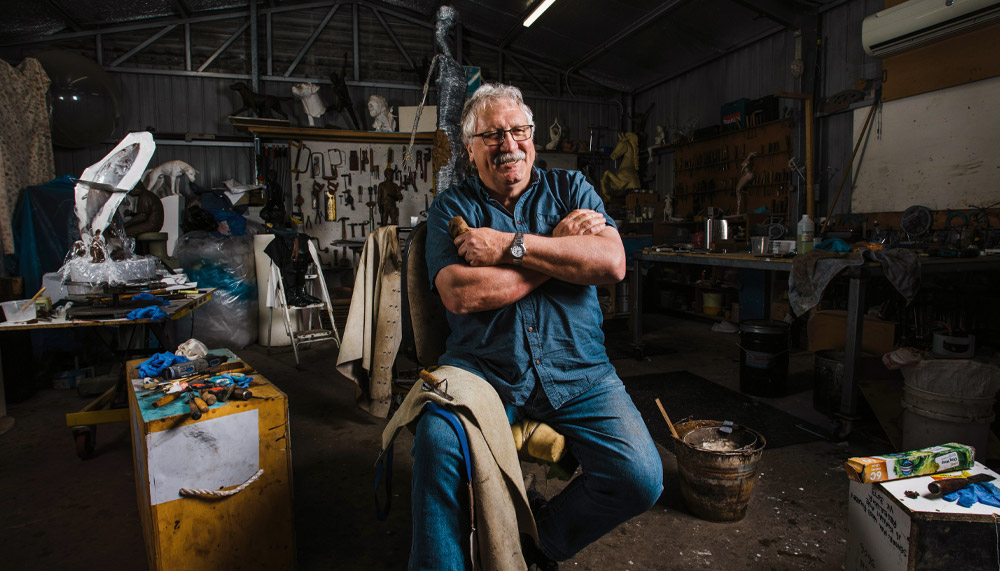A sculptor’s humble backyard shed on SA’s West Coast is a shrine to social history.
Story Gretel Sneath Photos Robert Lang
Ken Martin’s shed is filled with treasures cloaked in sheets, like a dusty museum. Memories abound down this breezy Port Lincoln backstreet, where some of the nation’s most prosperous industries, remarkable individuals and proudest sporting moments are intricately captured.
The fierce concentration of fast bowler Jason ‘Dizzy’ Gillespie, in full flight as he hurls the ball down the Adelaide Oval pitch. The determined strength of a tuna poler heaving a slippery missile from the deep blue onto the trawler deck. The champion mare Makybe Diva, fresh from a warm-up gallop, ears pricked and eyes fixed. “One has a sense of her looking at you, as she seems to remain focussed on you the whole time you walk around her,” Ken says.
Sculptor Ken has a story behind every one; of how he noticed and captured every nuance, and how his commissions came to be. Makybe Diva didn’t just put Port Lincoln on the map due to her tuna-industry connections; she was also Ken’s first public sculpture. The crowd erupted when the silken cover slid off the bronze at her foreshore unveiling, and Ken says the experience will stay with him for life.
A self-described “stickler for proportions”, he credits his early career as a shearer working the woolsheds of south-eastern SA’s Limestone Coast for his patient eye and appreciation of form. “There’s something beautiful about watching the wool peeling off the sheep; it’s quite poetic, really,” he says. “Shearing also taught me the dexterity needed to reach professional levels of productivity; the discipline of technique is what gives you speed (rather than rushing), and much the same happens with carving.”
In a good year of shearing, he and his partner tallied 45,000. “And they were quite wrinkly, tough sheep in the south-east, too,” Ken says. At night he would draw, inspired by cartoonist and illustrator Eric Jolliffe. “I was fascinated by pencil shading, and I have a pet theory that people who enjoy working in charcoal and pencil are potentially sculptors, because you’re dealing with light and shade,” he says.
The sculpting began in his early twenties, experimenting with soft Mount Gambier limestone and later wood.
This story excerpt is from Issue #133
Outback Magazine: Oct/Nov 2020










